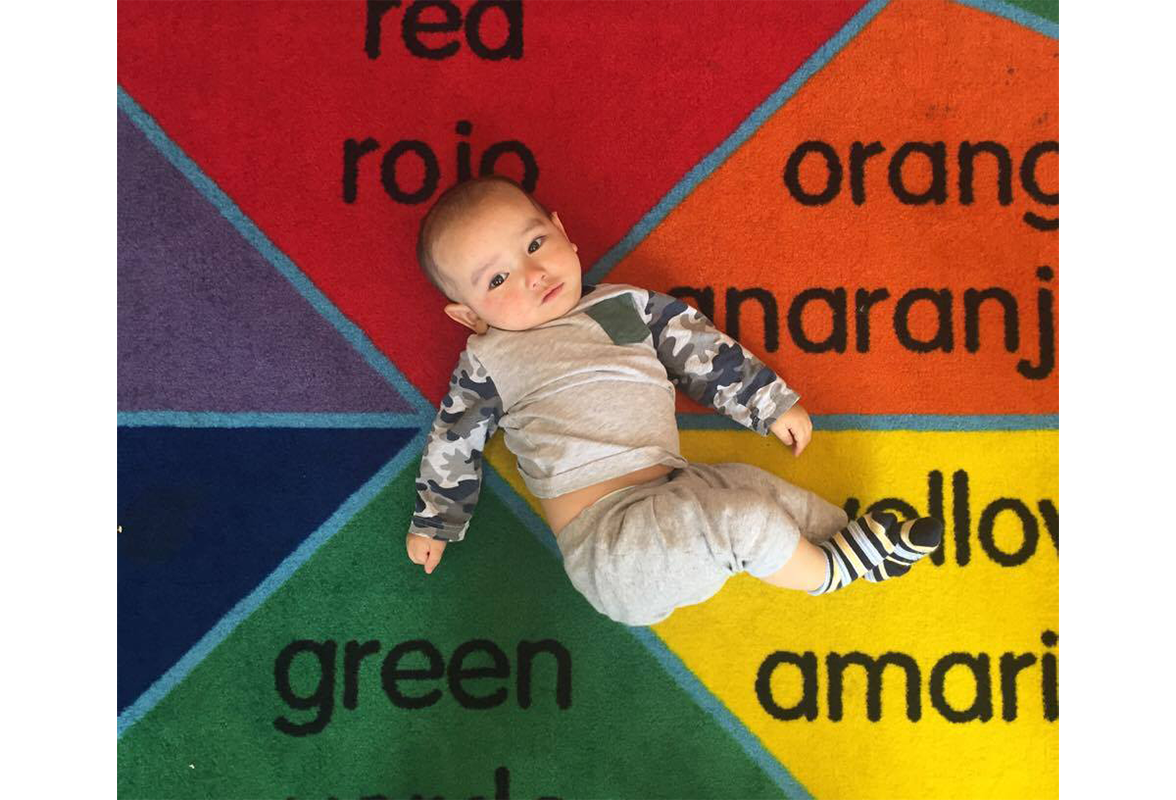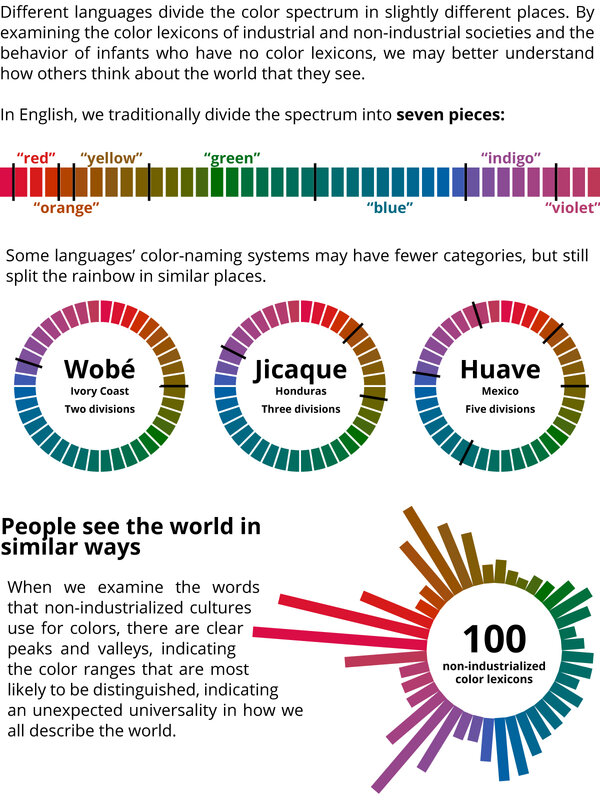Even babies agree roses are red, psychologists say
Loading...
Apparently��a rose by no name at all looks just��as red.
Even before learning to speak��, along with four other colors, according to a��paper published in April in the journal Proceedings of the National Academy of Sciences. The study presents the strongest evidence yet that color categories spring more from biology than from culture, the latest round in the nature vs. nurture debate of language and thought.
When linguists first wondered where color categories came from, physicists had no answer. The rainbow features no obvious breaks, yet most��English speakers have no trouble splitting the spectrum according to Roy G. Biv.��, with different cultures slicing the rainbow in random ways, but field researchers found that even completely unrelated languages often��, hinting that vision mechanics were stacking the deck in nature’s favor.
Now,��the most complete��infant color study to date reveals that 4- to 6-month-old babies can tell the difference between many of those same colors, despite not knowing the words for them.
“We were able to compare the way that our babies were looking at the colors to the way adults in the world talk about colors,” says lead author Alice Skelton, a��PhD��student at the University of Sussex in England.
Newborns can’t tell scientists what colors they see (that’s the point), but they can vote with their attention. Babies��shown��the same color in repetition eventually lose��interest and look away, but a new color tends to��hold their gaze. By exposing 179 infants to dozens of samples, scientists could infer which hues looked novel to each child.
Similar setups in the past had shown infants can sort colors, but this study was by far the most comprehensive to date. Ohio State University psychologist Angela Brown praised the experiment for its “ginormous data set,” which covered the whole hue circle.
“Previous work with babies has concentrated on one particular corner of color space ... and it’s just really hard to get a convincing picture of infant color categories from that piecewise approach,” continues Professor Brown, who was not involved in the research. “I frankly had sort of despaired that anyone was going to succeed in doing what Skelton et al. have managed.”
And the picture they got was more familiar than even Ms. Skelton had hoped. The infants could reliably distinguish between red, yellow, green, blue, and purple, five categories already well-known to researchers from����representing dozens of languages.
“We were perhaps expecting some reflection of that in our infant data but it wasn’t necessarily guaranteed,” she says.
In the nature vs. nurture debate, it’s a big win for nature. “If [pre-verbal infants] understand the same color categories as adults, then language can’t be responsible for the color categories,” explains Brown. At 6 months, nurture just hasn’t had time to muck things up.
But nature’s victory isn’t perfect. “It’s not like it’s absolutely set in stone. Culture is able to build upon it,” says Skelton. These divisions aren’t so much hard biological limits as they are a starting point from which language��can then diverge.
For example, linguists have found languages that lump “green” and “blue” into a kind of����color, despite the infant preference for two separate categories. Reduced color vocabularies are more common in pre-industrial societies, where artificially colored objects are rare.��Skelton calls these “use it or lose it” cases: “Categories are all about being efficient… If��you’re not making that distinction��between blue and green, it’s not efficient to keep hold of it so it kind of goes away.”��
After��all��we don’t name the millions of colors we can see, in part because it would be overwhelming, explains Brown.��
So why is it these five that get special treatment? Skelton discovered that if they sorted their data based on the����in the eye, they got a graph where just about one color cluster fell into each quadrant.
“That can explain four out of five of our color categories, and then the fifth one [red/yellow] – we don’t know yet basically,” she says.
Brown finds this result “really interesting,” but cautions against over-interpreting it. While the graph is a good description of what’s happening in the eye and optic nerve, a number of poorly understood image-processing circuits separate it from the high-level representation of color accessible to the conscious mind, the one babies might actually act on.��
“The problem is that it is not a perceptual color space,” Brown says. “It’s a great step in unraveling that chain connecting the optic nerve with whatever higher level system we’re using ... but it will take a long time to fully understand the implications of this analysis.”
But just because we may all share a biological basis for color doesn’t mean dorm room pontificators are out of a job. No experiment can tell us if my colors are your colors, Brown says. “We can test various aspects of the perception of blue [reaction time, memory]..., but that is never going to get to the quality of blue.”
Internal sensation aside, Skelton says physical color perception does vary, but that’s beside the point. “There are things like the distribution of color receptors in our eyes that will be different, so my red is probably not your red, but for communication��purposes��it doesn’t matter.”
She’s more curious about why our adult vocabulary grows to include mauve, magenta, and crimson. “How we move from these five categories into six, seven, eight, nine categories depending on what language you’re speaking is a really, really interesting question.”
Brown too sees colors as just the start. Their universality and reproducibility make them easy to study, opening the door to more general theories of perception and language.
“It’s proven to be an extremely rich field of study for understanding how we begin to unite what we see to what we say,” she says.






